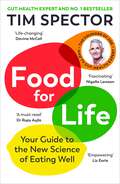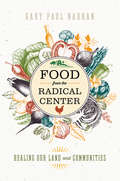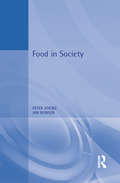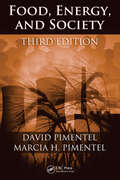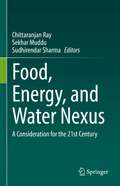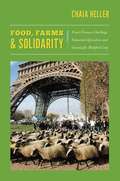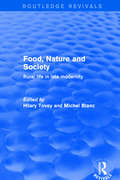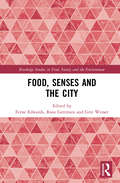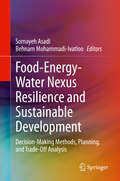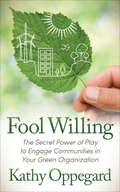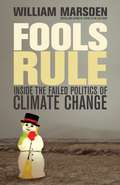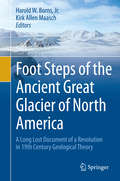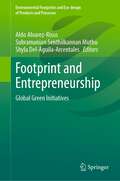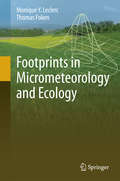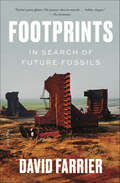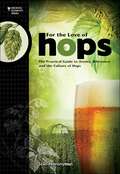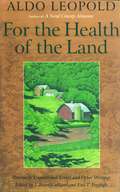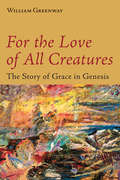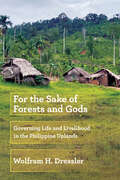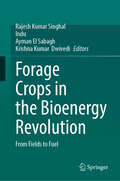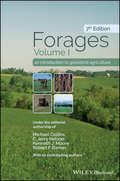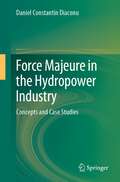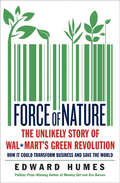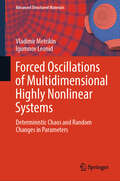- Table View
- List View
Food for Life: The New Science of Eating Well, by the Sunday Times bestselling author of SPOON-FED
by Tim Spector'Life-changing' DAVINA McCALL'A must-read' Dr RUPY AUJLA'Fascinating' NIGELLA LAWSON'Empowering' LIZ EARLE**AS HEARD ON THE DIARY OF A CEO PODCAST**Food is our greatest ally for good health, but the question of what to eat in the age of ultra-processed food has never seemed so complicated.Drawing on cutting-edge research and personal insights, Professor Tim Spector offers clear answers in this definitive, easy-to-follow guide to the new science of eating well.Empowering and practical, Food for Life is nothing less than a new approach to how to eat - for our health and the health of the planet.‘No fads, no nonsense, just practical, science-based advice on how to eat well’ Daily Mail, Books of the Year'A rigorously academic book that welcomes the layperson with open arms' The Times** A THE TIMES and SUNDAY TIMES BOOK OF THE YEAR**** WINNER OF THE FORTNUM & MASON SPECIAL AWARD **
Food from the Radical Center: Healing Our Land and Communities
by Gary Paul Nabhan"Informational and inspirational."—BooklistAmerica has never felt more divided. But in the midst of all the acrimony comes one of the most promising movements in our country's history. People of all races, faiths, and political persuasions are coming together to restore America's natural wealth: its ability to produce healthy foods.In Food from the Radical Center, Gary Nabhan tells the stories of diverse communities who are getting their hands dirty and bringing back North America's unique fare: bison, sturgeon, camas lilies, ancient grains, turkeys, and more. These efforts have united people from the left and right, rural and urban, faith-based and science-based, in game-changing collaborations. Their successes are extraordinary by any measure, whether economic, ecological, or social. In fact, the restoration of land and rare species has provided—dollar for dollar—one of the best returns on investment of any conservation initiative.As a leading thinker and seasoned practitioner in biocultural conservation, Nabhan offers a truly unique perspective on the movement. He draws on fifty years of work with community-based projects around the nation, from the desert Southwest to the low country of the Southeast. Yet Nabhan's most enduring legacy may be his message of hope: a vision of a new environmentalism that is just and inclusive, allowing former adversaries to commune over delicious foods.
Food in Society: Economy, Culture, Geography (A\hodder Arnold Publication)
by Peter Atkins Ian BowlerWho can deny the significance of food? It has a central role in our health and pleasure as well as in our economy, politics and culture. Food in Society provides a social science perspective on food systems and demonstrates the rich variety of disciplinary and theoretical contexts of food studies.While hunger and malnutrition remain a reality in many countries, for some food has become an experience rather than a sustenance. This book addresses the different worldwide understandings of food through thematic chapters and a wide range of material including: description of the political economy of the food chain, from production to the point of sale; analysis of global issues of supply and demand; critical debate of environmental and health aspects of food, including GM food, the role of habits, taboos, age and gender in food consumption.Each chapter contains a guide to further reading and to websites of relevance to food. Extensively illustrated, this book is essential reading for students of food studies in the social sciences and humanities.
Food, Energy, and Society
by David Pimentel Marcia H. PimentelSince the publication of the first edition of Food, Energy, and Society, the world's natural resources have become even more diminished due to the rapid expansion of the global human population. We are faced with dwindling food supplies in certain geographic areas, increasing pressure on energy resources, and the imminent extinction of many
Food, Energy, and Water Nexus: A Consideration for the 21st Century
by Chittaranjan Ray Sekhar Muddu Sudhirendar SharmaIn this book, major issues surrounding importance of water and energy for food security in the United States and India are described representing two extremes in yield, irrigation efficiency, and automation. The farming systems in these two countries face different risks in terms of climatic shifts and systems’ resiliency to handle the shocks. One may have comparative advantage over the other, but both are susceptible. Innovations in irrigation for food and fuel production, improvements in nitrogen and water use efficiency, and rural sociological issues are discussed here. We also look into some of the unintended consequences of high productivity agriculture in terms of surface and ground water quality and impacts on ecosystem services. Finally, we present ways to move forward to meet the food demands in the next half-century in both countries. As the current world population of 7 billion is expected to reach or exceed 10 billion in the next 40 years, there will be significant additional demand for food. A rising middle class and its preference for a meat-based diet also increases the demand for animal feed. This additional food and feed production needs special considerations in water and energy management besides the development of appropriate crop hybrids to withstand future climatic shifts and other environmental factors. A resilient agricultural landscapes will also be needed to withstand climatic fluctuations, disease pressures, etc. While the upper and many middle income countries have made significant improvements in crop yield due to pressurized irrigation and automation in farming systems, the lower income countries are struggling with yield enhancements due to such limitations. The rise in population is expected to be more in Sub-Sharan Africa and Middle East (Low to middle-income countries) where the crop yields are expected to be low.
Food, Farms, and Solidarity: French Farmers Challenge Industrial Agriculture and Genetically Modified Crops (New ecologies for the twenty-first century)
by Chaia HellerThe Confédération Paysanne, one of France's largest farmers' unions, has successfully fought against genetically modified organisms (GMOs), but unlike other allied movements, theirs has been led by producers rather than consumers. In Food, Farms, and Solidarity, Chaia Heller analyzes the group's complex strategies and campaigns, including a call for a Europe-wide ban on GM crops and hormone-treated beef, and a protest staged at a McDonald's. Her study of the Confédération Paysanne shows the challenges small farms face in a postindustrial agricultural world. Heller also reveals how the language the union uses to argue against GMOs encompasses more than the risks they pose; emphasizing solidarity has allowed farmers to focus on food as a cultural practice and align themselves with other workers. Heller's examination of the Confédération Paysanne's commitment to a vision of alter-globalization, the idea of substantive alternatives to neoliberal globalization, demonstrates how ecological and social justice can be restored in the world.
Food, Nature and Society: Rural Life in Late Modernity (Perspectives On Rural Policy And Planning Ser.)
by Michel BlancThis title was first published in 2001. Focusing on the distinctive ways in which rural social, economic and political life is experienced in developed societies in late modernity, this striking volume draws on empirical material from a wide range of countries within and outside the EU. It also incorporates comparative case studies from South Africa, Australia and New Zealand.
Food, Senses and the City (Routledge Studies in Food, Society and the Environment)
by Ferne Edwards Roos Gerritsen Grit WesserThis work explores diverse cultural understandings of food practices in cities through the senses, drawing on case studies in the Americas, Asia, Australia, and Europe. The volume includes the senses within the popular field of urban food studies to explore new understandings of how people live in cities and how we can understand cities through food. It reveals how the senses can provide unique insight into how the city and its dwellers are being reshaped and understood. Recognising cities as diverse and dynamic places, the book provides a wide range of case studies from food production to preparation and mediatisation through to consumption. These relationships are interrogated through themes of belonging and homemaking to discuss how food, memory, and materiality connect and disrupt past, present, and future imaginaries. As cities become larger, busier, and more crowded, this volume contributes to actual and potential ways that the senses can generate new understandings of how people live together in cities. This book will be of great interest to students and scholars of critical food studies, urban studies, and socio-cultural anthropology.
Food-Energy-Water Nexus Resilience and Sustainable Development: Decision-Making Methods, Planning, and Trade-Off Analysis
by Behnam Mohammadi-Ivatloo Somayeh AsadiThis book presents readers with an integrated modeling approach for analyzing and understanding the interconnection of water, energy, and food resources and discusses the relationship between resilience and sustainability of the food- energy –water (FEW) system. Authors provide novel frameworks, models, and algorithms designed to balance the theoretical and applicative aspects of each chapter. The book covers an integrated modeling approach for FEW systems along with developed methods, codes, and planning tools for designing interdependent energy, water and food systems. In-depth chapters discuss the impact of renewable energy resources in FEW systems, sustainable design and operation, net zero energy buildings, and challenges and opportunities of the FEW nexus in the sustainable development of different countries. This book is useful for graduate students, researchers, and engineers seeking to understand how sustainable FEW systems contribute to the resilience of these systems and help policy and design makers allocate and prioritize resources in an integrated manner across the food, energy, and water sectors.
Fool Willing: The Secret Power of Play to Engage Communities in Your Green Organization
by Kathy OppegardImagine what having more advocates could do for environmental organization: more engaged volunteers, more political wins for conservation, more financial support, and more enthusiastic collaborations. The U.S. is fortunate to have people from many different cultures and ethnicities, yet so many of these good folks have not been invited to full participation in the green movement.Fool Willing is a playful, practical guide for welcoming and including all communities at the “green table.” Putting a happy little kid, a salsa-dancing event planner, and Jane Goodall in the same room, Fool Willing would be what they would write together. Its light-hearted voice invites readers to bring playfulness and practicality as they make advances for people and the planet. Author and certified Martha Beck Life Coach, Kathy Oppegard helps people in environmental organizations bring communities into full participation in their organizations and volunteer teams. She has coordinated hundreds of volunteers for multiple events. Dig in and get ready to have more fun and be more effective as you grow your community in your green organization today!
Fools Rule: Inside the Failed Politics of Climate Change
by William MarsdenThis eloquent, rage-inciting polemic about the global failure to deal with climate change will appeal to readers of Tim Flannery, George Monbiot and Bill McKibben--and anyone concerned with the economic and environmental future of our planet.Kyoto, 1997. Montreal, 2005. Copenhagen, 2009. Cancun, 2010. In Fools Rule, Marsden illustrates how inefficient and short-sighted political negotiations have become despite mounting scientific evidence that immediate action is essential to curb the effects of climate change. International climate change summits are now widely monitored events, attended by state leaders and crowded with journalists; yet somehow they have never been less productive. Treaties and action plans are smothered by economic self-interest, diplomatic errors and every nation's hungry scramble for its share of the remaining atmospheric space. Marsden takes us from inside the bungled negotiations at Copenhagen to the melting glaciers and untapped oil reserves of the Arctic; he shows us the paralyzing effect oil and gas companies have on green legal initiatives in the United States, and therefore on any international climate change treaty; and, with wit and penetrating insight, he asks the toughest question--will we be able to change before it's too late?From the Hardcover edition.
Foot Steps of the Ancient Great Glacier of North America
by Jr. Harold W. Borns Kirk Allen MaaschJohn K. DeLaski, M. D. practiced medicine in the Penobscot Bay region of Maine and, in addition, was a naturalist with keen powers of observation. His study of the landscape led to the conclusion that a thick glacier had overtopped the highest hills, flooded all of Penobscot Bay, extended far to the east and west and probably was part of a greater continental glacier. He published these very critical field observations and inferences in numerous articles in local newspapers and magazines, and in the American Journal of Science in 1864. His work put him on the "team" of Benjamin Silliman, James D. Dana and Louis Agassiz as an advocate for glaciation as the regional land shaping force opposed to that of the Biblical Deluge, a major scientific conflict of the day both in North America and Europe. He remained a shadowy player, in the background, but clearly contributed critical observations to the argument through personal interactions with Agassiz and other prominent naturalists. They incorporated DeLaski's observations into their own presentations, often without giving him credit. John DeLaski's summary work, a 400 page handwritten manuscript for the book, "The Ancient Great Glacier of North America", was dated 1869. He died in 1874 and the book was not published. The historic significance of DeLaski's unpublished book is based upon its startling contribution to one of the major scientific questions of the day of whether the surficial geology of northern U. S. and Canada was caused by the actions of the Biblical Flood or by continental glaciation. If published, this would have been the first book on this continent, at least, to present a holistic discussion of the controversy in which he presented his critical observations of the surficial geology in Maine, southern New England and New Brunswick, Canada and concluded that these depositional and erosional features must be of glacial origin. DeLaski then incorporated other evidence into the book for glaciation reported by others from the region during a decade or two, and from the mid and far west and Canada to advocate that the entire region was covered by an ice sheet that was at least 5,000 feet and probably much thicker over interior northern U. S. and Canada and which terminated along a glacial margin which extended from southern new England as far westward along the courses of the Ohio, and Missouri Rivers. All this was done while most "naturalists" still advocated the Biblical Flood to explain the major components of the surficial geology in North America and abroad. DeLaski's book containing his critical observations of clearly so many landscape features of glacial origin, if published would have been a pivotal document that would have strongly supported those arguing for glaciations in the glaciations vs. flood international argument.
Footprint and Entrepreneurship: Cases On Circular Economy And Entrepreneurship (Environmental Footprints And Eco-design Of Products And Processes Series)
by Subramanian Senthilkannan Muthu Aldo Alvarez-Risco Shyla Del-Aguila-ArcentalesThis book highlights ten cases of entrepreneurship that – in the context of circular economy – have redefined the paradigm of luxury and the notion of exclusivity that it requires. It shows how, by using technology and a new consumption model, the ten companies have created novel business models for luxury, and more intelligent forms of use better-suited to modern times.
Footprints in Micrometeorology and Ecology
by Thomas Foken Monique Y. LeclercHow to interpret meteorological measurements made at a given level over a surface with regard to characteristic properties such as roughness, albedo, heat, moisture, carbon dioxide, and other gases is an old question which goes back to the very beginnings of modern micrometeorology. It is made even more challenging when it is unclear whether these measurements are only valid for this point/region and precisely describe the conditions there, or if they are also influenced by surrounding areas. After 50 years of field experiments, it has become both apparent and problematic that meteorological measurements are influenced from surfaces on the windward side. As such, extending these measurements for inhomogeneous experimental sites requires a quantitative understanding of these influences. When combined with atmospheric transport models similar to air pollution models, the 'footprint' concept - a fundamental approach introduced roughly 20 years ago - provides us with information on whether or not the condition of upwind site homogeneity is fulfilled. Since these first models, the development of more scientifically based versions, validation experiments and applications has advanced rapidly. The aim of this book is to provide an overview of these developments, to analyze present deficits, to describe applications and to advance this topic at the forefront of micrometeorological research.
Footprints: In Search of Future Fossils
by David FarrierA profound meditation on climate change and the Anthropocene and an urgent search for the fossils—industrial, chemical, geological—that humans are leaving behindWhat will the world look like in ten thousand years—or ten million? What kinds of stories will be told about us?In Footprints: In Search of Future Fossils, the award-winning author David Farrier explores the traces we will leave for the very distant future. Modern civilization has created objects and landscapes with the potential to endure through deep time, whether it is plastic polluting the oceans and nuclear waste sealed within the earth or the 30 million miles of roads spanning the planet. Our carbon could linger in the atmosphere for 100,000 years, and the remains of our cities will still exist millions of years from now as a layer in the rock. These future fossils have the potential to reveal much about how we lived in the twenty-first century.Crossing the boundaries of literature, art, and science, Footprints invites us to think about how we will be remembered in the myths and stories of our distant descendants. Traveling from the Baltic Sea to the Great Barrier Reef, and from an ice-core laboratory in Tasmania to Shanghai, one of the world’s biggest cities, Farrier describes a world that is changing rapidly, with consequences beyond the scope of human understanding. As much a message of hope as a warning, Footprints will not only alter how you think about the future; it will change how you see the world today.
For The Love of Hops: The Practical Guide to Aroma, Bitterness and the Culture of Hops (Brewing Elements)
by Stan HieronymusHops, once a marginal player in modern brewing, have risen to iconic status thanks to the American craft beer revolution. In For the Love of Hops Stan Hieronymus explores the rich history, cultivation, and science behind this essential brewing ingredient. Hops have a long and mysterious past. Hieronymus unpacks their story with a discerning eye, separating fact from myth through deep research into historical records, scientific studies, and interviews with experts and growers. His work offers a compelling, wide-ranging look at how hops evolved from a supporting player to a defining feature in beer. From field to fermenter, the path of the hop is anything but simple. Hieronymus blends technical details—such as hop anatomy and growth cycles—with firsthand stories from farming families who&’ve cultivated hops for generations. He leads readers through historic and emerging growing regions: Germany, the Czech Republic, England, the U.S., Australia, and New Zealand. Along the way, he illustrates the challenges growers face, from crop diseases to shifting market demands. Hieronymus also provides a catalog of over 100 hop varieties, from noble Old World types like Saaz and Tettnang to bold New World stars like Cascade, Amarillo, and Nelson Sauvin. Each entry includes vital stats and insights on flavor, aroma, and usage. Once harvested, hops unlock a brewer&’s full creative range. The book dives into their essential compounds—alpha and beta acids—and how they influence bitterness, flavor stability, and aroma. Hieronymus breaks down a variety of hopping techniques, including: Early &Late Additions – How timing shapes flavor. First Wort Hopping – Adding hops before the boil. Hop Bursting & Continuous Hopping – Techniques for maximizing aroma. Dry Hopping – A full chapter dedicated to this aromatic art, from 19th-century England to today&’s cutting-edge methods like hop rockets and torpedoes. He also explores how the perception of bitterness varies by individual and how exposure to heavily hopped beers can change our taste preferences—a phenomenon known as the &“lupulin shift.&” The development and meaning of IBUs (International Bitterness Units) are explained in context, helping demystify a widely misunderstood metric. To ground theory in practice, the book features 16 beer recipes from renowned breweries in the U.S., Belgium, Germany, England, New Zealand, and more. These recipes reveal how top brewers use hops to shape character and balance.For the Love of Hops is both educational and inspiring—a must-read for brewers, beer lovers, and anyone interested in the flower that changed beer forever.
For the Health of the Land: Previously Unpublished Essays And Other Writings
by Aldo Leopold Scott Russell Sanders J. Baird Callicott Eric T. FreyfogleAldo Leopold's classic work A Sand County Almanac is widely regarded as one of the most influential conservation books of all time. In it, Leopold sets forth an eloquent plea for the development of a "land ethic" -- a belief that humans have a duty to interact with the soils, waters, plants, and animals that collectively comprise "the land" in ways that ensure their well-being and survival.For the Health of the Land, a new collection of rare and previously unpublished essays by Leopold, builds on that vision of ethical land use and develops the concept of "land health" and the practical measures landowners can take to sustain it. The writings are vintage Leopold -- clear, sensible, and provocative, sometimes humorous, often lyrical, and always inspiring. Joining them together are a wisdom and a passion that transcend the time and place of the author's life.The book offers a series of forty short pieces, arranged in seasonal "almanac" form, along with longer essays, arranged chronologically, which show the development of Leopold's approach to managing private lands for conservation ends. The final essay is a never before published work, left in pencil draft at his death, which proposes the concept of land health as an organizing principle for conservation. Also featured is an introduction by noted Leopold scholars J. Baird Callicott and Eric T. Freyfogle that provides a brief biography of Leopold and places the essays in the context of his life and work, and an afterword by conservation biologist Stanley A. Temple that comments on Leopold's ideas from the perspective of modern wildlife management.The book's conservation message and practical ideas are as relevant today as they were when first written over fifty years ago. For the Health of the Land represents a stunning new addition to the literary legacy of Aldo Leopold.
For the Love of All Creatures: The Story of Grace in Genesis
by William GreenwayFresh biblical take on a transcending, divine grace that embraces all of God's creatures This broad-ranging, groundbreaking book by William Greenway unfolds a biblical spirituality centering on love for all creation and all creatures. Greenway rereads the creation and flood narratives in Genesis from an overtly creature-loving perspective that not only inspires care for creation but also reveals sophisticated understandings of faith, grace, and evil vital for twenty-first-century spirituality. Comparing the ancient Israelite cosmology of Genesis both with the ancient Babylonian cosmology of the Enuma Elish and with the modern Darwinian cosmology of Thomas Hobbes's Leviathan, Greenway shows how the Bible in Genesis extends far beyond those other cosmologies in its discernment of the transcending, gracious love of God. Standing at the intersection of animal rights, "green" biblical studies, and philosophical theology, Greenway's For the Love of All Creatures will interest and inform a wide range of readers.
For the Love of All Creatures: The Story of Grace in Genesis
by William GreenwayFresh biblical take on a transcending, divine grace that embraces all of God's creatures This broad-ranging, groundbreaking book by William Greenway unfolds a biblical spirituality centering on love for all creation and all creatures. Greenway rereads the creation and flood narratives in Genesis from an overtly creature-loving perspective that not only inspires care for creation but also reveals sophisticated understandings of faith, grace, and evil vital for twenty-first-century spirituality. Comparing the ancient Israelite cosmology of Genesis both with the ancient Babylonian cosmology of the Enuma Elish and with the modern Darwinian cosmology of Thomas Hobbes's Leviathan, Greenway shows how the Bible in Genesis extends far beyond those other cosmologies in its discernment of the transcending, gracious love of God. Standing at the intersection of animal rights, "green" biblical studies, and philosophical theology, Greenway's For the Love of All Creatures will interest and inform a wide range of readers.
For the Sake of Forests and Gods: Governing Life and Livelihood in the Philippine Uplands
by Wolfram H. DresslerFor the Sake of Forests and Gods documents the consequences of nonstate actors impinging on the existence of Indigenous peoples in the remote highlands of Palawan Island, the Philippines. Nimble, focused, and well-funded, religious and environmental organizations increasingly assume governmental authority over the lives and livelihoods of the Pala'wan people within their ancestral territories.Wolfram H. Dressler traces these actors' history and contemporary practices, revealing how they bypass the state to govern the less governed. In the highlands, environmental NGOs valorize customary objects and practices to suppress swidden and support forest conservation, while evangelical missionaries regulate Pala'wan beliefs, health, and hygiene.Bridging material studies and biopolitics, For the Sake of Forests and Gods explores how these nonstate actors use customary objects for comprehensive reforms of Pala'wan bodies and souls, centering on how the unique properties of the Tingkep basket mediate nonstate biopower. These reforms impact highlanders differently: some adopt biopolitical ideals willingly, others for political and economic gain. Yet others resist interventions, prioritizing family livelihoods. Ultimately, Dressler argues that Indigenous sovereignty matters more than ever as nonstate biopower intensifies in Southeast Asia's uplands.
Forage Crops in the Bioenergy Revolution: From Fields to Fuel
by Rajesh Kumar Singhal Ayman El Sabagh Indu Krishna Kumar DwivediThis book delves into the popular "Food vs. Fuel" arguments and examines the complicated interplay between biofuel and agricultural markets. It provides information on forage crops as potential third-generation sources of bioenergy, and their cultivation practices. The areas covered include methodologies to enhance production efficiency of bioenergy, metabolism involved in cellulosic ethanol production, influence of policy and technical implementation, and the consequent impact on biofuels. The discussion of current difficulties impeding the expansion of the cellulosic biofuel business, as well as potential solutions are discussed as well. This book also covers case studies describing the present biofuel policies and its consequences on both the energy as well as agricultural sectors, as well as analysis of the current and growing biofuel market. The gathered information in the book is an excellent source for phenotyping, trait improvement, and developing future crop stress-management strategies and models. Students, scientists, policymakers, and investors in the bioenergy business will find this book to be a useful resource. Also, it serves as an excellent reference book for agriculturists, plant scientists, climatologists, and research scholars.
Forages, Volume 1: An Introduction to Grassland Agriculture
by Michael Collins C. Jerry Nelson Kenneth J. Moore Robert F. BarnesForages, Volume I, Seventh Edition is the most comprehensive text available for teachers of undergraduate Forages courses. This edition will provide students with a good balance of scientific principles, to aid in integrating the concepts they learn, and practical information on forage identification, plant characteristics, management, and utilization that can be used by forage management practitioners. Grassland ecosystems are extremely complex, including the plant/animal interface as well as the soil/climate/forage interface and the text must support understanding and integration of all of these considerations. The coverage of the science behind the plant characteristics and responses make the book applicable in many parts of the world, while other region-specific management information relates mainly to North America.This edition has been updated to address emerging areas of study, including the use of forage plants as bioenergy crops. The editors also address the renewed national interest in environmental issues such as water quality, global climate change and eutrophication in the Gulf. This edition also addresses the role of forages for wildlife habitat and food sources, another area of increased interest in recent years. These revisions respond to the generational change taking place among forage scientists and teachers in recent years.
Force Majeure in the Hydropower Industry: Concepts and Case Studies
by Daniel Constantin DiaconuThis book aims to highlight the particular situation faced by certain hydropower companies by the fact that they cannot fulfil their contracts due to force majeure. The first part of this book will be an analysis of how water is used in electricity production. It is important to point out that all types of energy sources use water, to a different extent, of course, and that its spatial and temporal availability is very important. The focus will be on hydropower, presenting the current situation at the global level, and the effect of reducing the amounts of water in the river system.The second part is based on the presentation of the concept of force majeure and the ways of presenting and drafting it in a contract. Many disputes or the success of a contract depended heavily on the provisions of this article of the contract. Obviously, there are also situations in which the signatory parties abuse or are not protected by these provisions of force majeure. Starting from a few brief examples from the international level, we reach a wide discussion of the situation created in Romania, when the largest supplier of electricity produced on the basis of water terminates several contracts invoking force majeure. The manner in which the opinion of the parties involved is presented to the court is analyzed and presented in detail.
Force of NatureThe Unlikely Story of WalMart's Green Revolution: The Unlikely Story of Wal-Mart's Green Revolution
by Edward HumesWhat happens when a renowned river guide teams up with the CEO of one of the largest and least Earth-friendly corporations in the world? When it's former Wal-Mart CEO H. Lee Scott and white-water expert turned sustainability consultant Jib Ellison, the result is nothing less than a green business revolution. Wal-Mart-long the target of local businesses, labor advocates, and environmentalists who deplore its outsourced, big-box methods-has embraced an unprecedented green makeover, which is now spreading worldwide. The retail giant that rose from Sam Walton's Ozarks dime store is leveraging the power of 200 million weekly customers to drive waste, toxics, and carbon emissions out of its stores and products. Neither an act of charity nor an empty greenwash, Wal-Mart's green move reflects its river guide's simple, compelling philosophy: that the most sustainable, clean, energy-efficient, and waste-free company will beat its competitors every time. Not just in some distant, utopian future but today. From energy conservation, recycling, and hybrid trucks to reduced packaging and partnerships with environmentalists it once met only in court, Wal-Mart has used sustainability to boost its bottom line even in a tough economy-belying the age-old claim that going green kills jobs and profits. Now the global apparel business, the American dairy industry, big agriculture, and even Wall Street are following Wal-Mart's lead, along with the 100,000 manufacturers whose products must become more sustainable to remain on Wal-Mart's shelves. Here Pulitzer Prize winner and bestselling author Edward Humes charts the course of this unlikely second industrial revolution, in which corporate titans who once believed profit and planet must be at odds are learning that the best business just may be a force of nature.
Forced Oscillations of Multidimensional Highly Nonlinear Systems: Deterministic Chaos and Random Changes in Parameters (Advanced Structured Materials #222)
by Vladimir Metrikin Igumnov LeonidThis book highlights the presentation of methods for studying oscillations under external periodic influence and random changes in parameters in dynamic systems with nonlinearities that have discontinuities and kinks. The analysis of dynamic systems is based on effective approaches and algorithms of the method of point mappings of Poincaré surfaces, developed by the Nizhny Novgorod Scientific School of academician A.A. Andronov. Considerable attention is paid to the study of the general picture of the possible behavior of systems and their use in solving various applied problems. Using specific examples, it is found that this research approach allows not only to advance in the study of known nonlinear features but also to discover new effects and applications. The presentation is illustrated by numerous specific examples of oscillatory strongly nonlinear systems with discontinuous nonlinearities or piecewise-continuous nonlinearities. A separate chapter is devoted to the development and use of the point mapping method for random changes in the parameters of dynamic systems, as well as in dynamic systems subject to external seismic loads. The book is intended for scientists and engineers who are engaged in research and practice activities related to the theory of nonlinear oscillations and its applications, as well as graduate students and senior undergraduate students in relevant majors.
